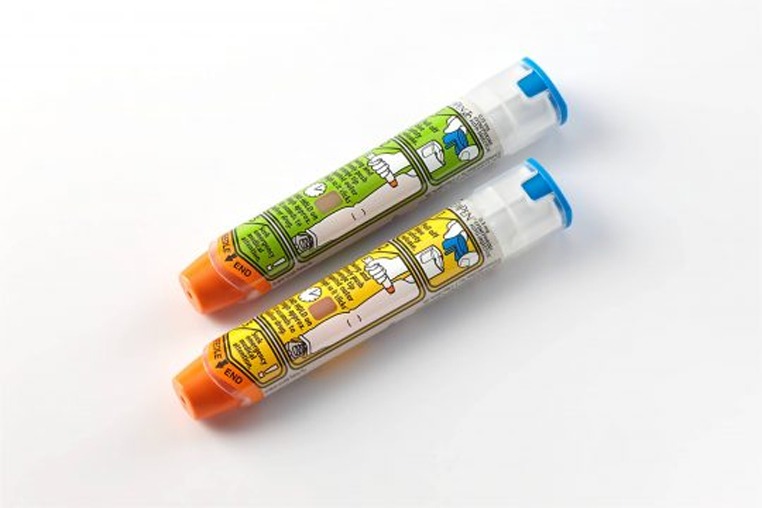First Aid Training in Canberra. Book an Anaphylaxis Course. Nationally Recognised Training. Perfect Dickson Location with Free Parking. Free First Aid Manual.
SEBASTIAN was just six months old when he had his first anaphylactic reaction.
His mum, Irene Potter, gave him a quarter of a teaspoon of natural yoghurt. Her husband was out and it was just her and Sebastian at home.
“He ate it and I noticed his face was a little bit red but I didn’t think too much of it,” Irene told news.com.au.
Irene put Sebastian down for a moment while she went to the bathroom and when she came back she knew something was seriously wrong.
“When I got back his whole body was red and he was crying and drooling,” she recalled.
“I was trying to ring my husband and then his cry turned hoarse and that’s when I called Triple-0.”
Mrs Potter said waiting for the ambulance and watching as her son got worse were the “longest minutes of my life”.
“There was nothing I could do except cuddle him and try to calm him down,” she said.
“His lips were swollen and he was red but pretty much everything else was internal. The doctors said his airway was being compromised.”
Thankfully the ambulance arrived and was able to get Sebastian to the hospital where he made a full recovery from the terrifying event.
Irene is a nurse on the Gold Coast but didn’t immediately recognise what was happening because no one else in their family has a history of anaphylaxis.
“It’s not what your mind immediately jumps to in that situation,”she said
Shortly after that event Irene and her husband Shane discovered Sebastian was severely allergic to all egg and dairy products.
They quickly realised they had to change their lifestyle dramatically if they wanted to keep their little boy safe.
Sebastian is now four and Irene said even simple things like going to school are a daily risk.
“We instantly know if he has been playing with kids at school that have been in contact with milk because he will get a runny nose and watery eyes,” she said.
“Even if he touches a toy that someone else has touched who had milk he will get a reaction.”
Because of his condition Sebastian has to miss out on a lot of things other children his age get to do.
He never attended daycare because the risk of coming into contact with dairy was too high. He isn’t allowed to attend birthday parties and eat cake with other children.
Irene and Shane also have two daughters, but they can’t even eat a meal out as a family as they can’t ensure the necessary measures are taken in food preparation.
The times they have attempted to eat out they say they encountered people who refused to take Sebastian’s allergies seriously.
“One day we decided to try and have a meal out as a family so we called the restaurant ahead of time to explain our situation and make sure we could be accommodated,” Irene said.
“We got there and we went to order him something and we asked them if it had any dairy in it and they assured us there wasn’t.”
The only issue was the server didn’t twig that butter was used in the dish or the fact that even if the food came into contact with a surface that had dairy or eggs Sebastian would have a reaction.
“Luckily we found this out before he ate any of it but you always have to be super vigilant,” Irene said.
“You have to really drive it home to people that he isn’t just going to get a rash if he eats it, he is going to stop breathing.”
Over the years they have been to numerous specialists and tried different ways to increase Sebastian’s tolerance so he can start doing the things other kids can do, but so far they haven’t had any success.
But now the Potter family finally thinks it has found a treatment that could help Sebastian — the only problem is it isn’t available in Australia.
Dr Douglas Jones is a specialist in the US who offers Oral Immunotherapy which has a high success rate in treating anaphylaxis.
Oral Immunotherapy involves gradually administering increasing amounts of the allergen to build up tolerance.
To undertake the treatment Irene will have to move with her three children to Utah for six to nine months on a medical visa, which doesn’t allow her to work.
The costs of the potentially lifesaving treatment is expected to reach $50,000 and they have set up a GoFundMe page to help alleviate some of the financial stress.
“We don’t know how he is going to react or even if it is going to work for him but we have to try,” Irene said of the treatment.
“It is starting to become more popular so it may be available in Australia in a few years but we can’t wait that long.”
Book the first aid training you need at www.canberrafirstaid.com

